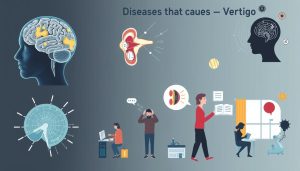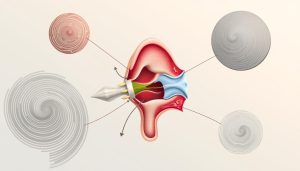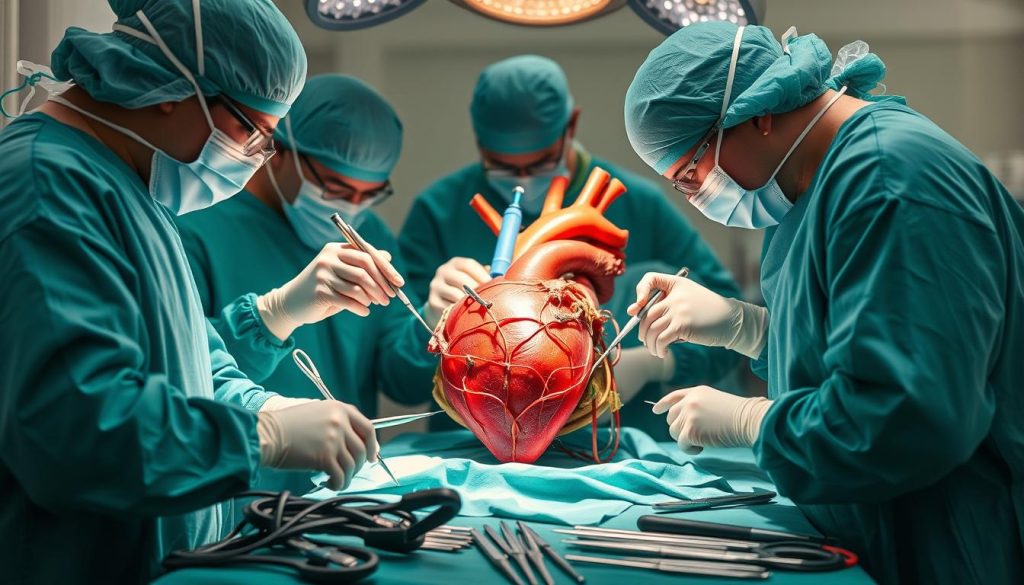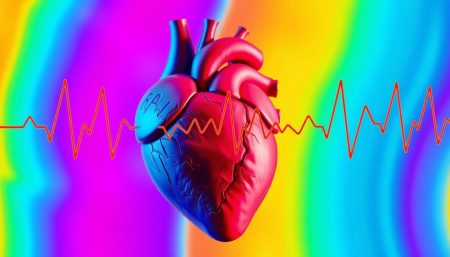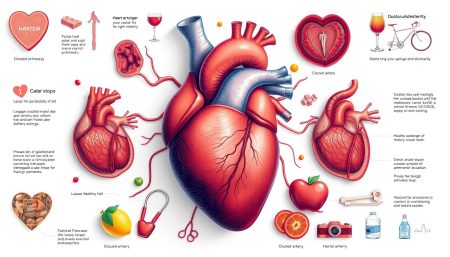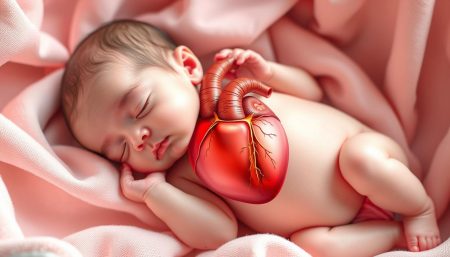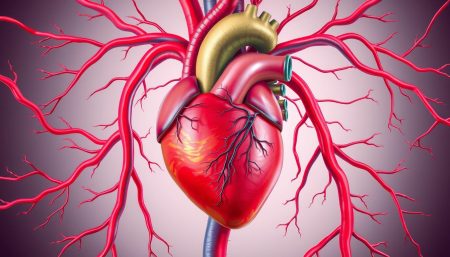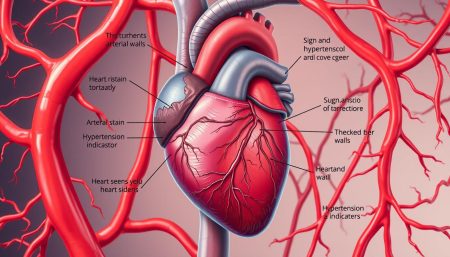Heart surgery is a complex field with many procedures for different heart issues. Two main types are bypass and open heart surgeries. It’s important for patients to know the difference between them.
Heart bypass surgery reroutes blood flow around blocked arteries. It aims to boost blood flow to the heart muscle. Open heart procedures, on the other hand, directly work on the heart’s structures like valves or chambers.
The main difference is in their approach and purpose. Bypass surgery is for coronary artery disease. Open heart procedures tackle a broader range of heart conditions. Understanding these differences helps patients and their families make better choices for their heart care.
Understanding Cardiac Surgery Basics
Cardiac surgery is a wide range of treatments for heart issues. These techniques have greatly improved over time. They have changed how we care for patients and their outcomes.
Definition of Cardiac Surgery
Cardiac surgery is about operations on the heart or big blood vessels. It includes fixing blocked arteries, replacing heart valves, and fixing birth defects. Traditional open-heart surgery means opening the chest to reach the heart.
Historical Development of Heart Surgeries
The history of heart surgery started in the late 1800s. Early doctors faced big challenges because of old technology and not knowing much about the heart. The first heart surgery success was in 1896, opening doors for more progress.
Evolution of Modern Surgical Techniques
Modern heart surgery has made huge leaps forward. The heart-lung machine, introduced in the 1950s, helped with complex surgeries. In the 1990s, less invasive methods came along, making recovery faster. Now, we have robotic and catheter-based surgeries, giving patients more options than traditional open-heart surgery.
“The evolution of cardiac surgery has been nothing short of miraculous. What was once deemed impossible is now routine, giving hope to millions worldwide.”
As heart surgery techniques keep getting better, we can offer more specific treatments for different heart problems.
Difference Between Bypass and Open Heart Surgery
It’s key for patients to know the difference between bypass and open heart surgery. Both are big operations but serve different needs and use different methods.
Bypass surgery, or coronary artery bypass grafting (CABG), reroutes blood flow around blocked arteries. This helps the heart get more blood without touching the heart. Open heart surgery, on the other hand, opens the chest and works directly on the heart.
The goals of these surgeries are different. Bypass surgery aims to fix blood flow to the heart. Open heart surgery tackles more issues, like fixing valves, correcting birth defects, or transplanting a heart.
| Aspect | Bypass Surgery | Open Heart Surgery |
|---|---|---|
| Primary Focus | Coronary arteries | Heart structures |
| Incision Size | 6-8 inches | 8-10 inches |
| Recovery Time | 4-6 weeks | 6-8 weeks |
| Common Conditions | Coronary artery disease | Valve disorders, congenital defects |
When looking at bypass surgery vs open heart surgery, remember bypass is a type of heart surgery. The choice depends on the patient’s health, condition, and the doctor’s advice. Both surgeries have become less invasive, leading to quicker recoveries and better results.
Coronary Artery Bypass Graft (CABG) Explained
Coronary artery bypass graft, or CABG, is a surgery for severe heart disease. It makes new paths for blood to flow to the heart. This helps when arteries are blocked.
Types of Bypass Grafts
There are different grafts used in CABG. The most common are:
- Saphenous vein grafts: Taken from the leg
- Internal mammary artery grafts: From the chest wall
- Radial artery grafts: From the forearm
Each graft has its benefits. The choice depends on the patient and the surgeon.
Surgical Techniques Used in CABG
The traditional method opens the chest. But, new ways are becoming more common. These include:
- Off-pump bypass: Surgery on a beating heart
- Robotic-assisted CABG: Using robotic arms for precise movements
- Endoscopic vessel harvesting: Minimally invasive graft collection
These methods aim to lessen trauma and quicken recovery.
Recovery Timeline for Bypass Surgery
Recovery from heart bypass surgery varies. But, here’s a general timeline:
- Hospital stay: 5-7 days
- Return to light activities: 4-6 weeks
- Full recovery: 2-3 months
Following your doctor’s advice is key for a smooth recovery. It helps avoid problems after surgery.
Traditional Open Heart Surgery: A Comprehensive Overview
Traditional open-heart surgery is a key part of heart care. It involves a big cut in the chest to reach the heart. Doctors use it to fix many heart problems, like blocked arteries, faulty valves, and birth defects.
Doctors use a special machine to keep the heart stopped during surgery. This machine takes over the heart’s job. The surgery starts with opening the breastbone to see the heart.
Important parts of this surgery include:
- Large incision in the chest
- Use of heart-lung machine
- Direct access to the heart
- Longer recovery time
Even though new, smaller surgeries are becoming more common, old-school open-heart surgery is very important. It lets doctors do detailed repairs and replacements that smaller surgeries can’t handle.
| Aspect | Traditional Open-Heart Surgery |
|---|---|
| Incision Size | 6-8 inches |
| Hospital Stay | 5-7 days |
| Recovery Time | 6-8 weeks |
| Visibility for Surgeon | Excellent |
Even with new surgeries, traditional open-heart surgery is very important. It gives doctors the best view and access to fix serious heart problems.
Common Conditions Requiring Heart Surgery
Heart surgery is often needed for many heart problems. Knowing about these conditions helps both patients and doctors. They can then decide on the best treatment, like heart surgery or other techniques.
Coronary Artery Disease
Coronary artery disease happens when plaque blocks the heart’s arteries. This reduces blood flow. Symptoms include chest pain and trouble breathing.
Bypass surgery is a common fix. It creates new paths for blood to flow around blocked areas.
Valve Disorders
Heart valves can get damaged or diseased. This affects blood flow. To fix this, valve repair or replacement surgeries are often needed.
These surgeries can be done with open heart surgery or less invasive methods.
Congenital Heart Defects
Some people are born with heart problems. These can range from simple holes to complex issues. Early treatment is key for the best results.
| Condition | Common Symptoms | Typical Surgical Approach |
|---|---|---|
| Coronary Artery Disease | Chest pain, shortness of breath | Bypass surgery |
| Valve Disorders | Fatigue, swelling in legs | Valve repair or replacement |
| Congenital Heart Defects | Poor growth, bluish skin | Defect-specific correction |
Each condition needs a special treatment plan. Surgeons look at how severe it is, the patient’s overall health, and their heart’s shape. They then choose between bypass or open heart surgery.
Minimally Invasive Cardiac Surgery Options
Cardiac surgery has changed a lot, giving patients new options. Now, there are less invasive ways to treat the heart. These new methods mean shorter recovery times and fewer risks.
These new surgeries use smaller cuts and special tools. They are different from old methods because they cause less pain and scarring. Patients usually get better faster and can go back to their daily lives sooner.
Robotic-assisted surgery is one of these new techniques. It lets surgeons work with more precision using a robot. Another method uses small cuts between the ribs, avoiding a big chest cut.
When looking at heart surgery options, knowing the differences is key. Here’s a look at some main points:
| Aspect | Traditional Open-Heart Surgery | Minimally Invasive Cardiac Surgery |
|---|---|---|
| Incision Size | 6-8 inches | 2-4 inches |
| Hospital Stay | 5-7 days | 3-5 days |
| Recovery Time | 6-8 weeks | 2-4 weeks |
| Scarring | Significant | Minimal |
| Pain Level | Higher | Lower |
Minimally invasive surgery has many benefits. But, it’s not right for every heart problem. Your doctor will choose the best option for you based on your health and needs.
Surgical Approaches and Incision Types
Cardiovascular surgery has grown, with many ways to do open heart surgeries. The type of cut made is key to how well a patient does and how fast they get better.
Sternotomy vs. Small Incisions
Older heart surgeries often need a big cut down the chest. This gives great access but means a longer time to heal. On the other hand, small cuts are used in newer, less invasive methods. These cuts cause less damage and help patients recover faster.
Access Points for Different Procedures
The way to get to the heart depends on the problem being fixed. For instance, fixing the aortic valve might need a smaller chest cut. But fixing the mitral valve might need a cut on the right side of the chest.
| Procedure | Common Access Point | Incision Size |
|---|---|---|
| Coronary Artery Bypass | Full Sternotomy | 6-8 inches |
| Aortic Valve Replacement | Mini-Sternotomy | 2-4 inches |
| Mitral Valve Repair | Right Thoracotomy | 2-3 inches |
Doctors pick the best way to operate based on the patient’s health and the heart problem. They aim to get the best view of the heart while causing the least harm and helping the patient heal quickly.
Recovery and Rehabilitation Comparison
The journey to recovery after heart surgery is different for each person. A comparison between bypass surgery and open heart surgery shows clear differences in how patients get better.
Bypass surgery patients usually stay in the hospital for 4-7 days. They focus on managing pain from the chest incision. Over 6-8 weeks, they slowly start doing more activities.
Open heart surgery recovery takes longer, with a hospital stay of 7-10 days. Pain control is key because of the bigger incision. It takes 2-3 months to get back to normal activities.
| Aspect | Bypass Surgery | Open Heart Surgery |
|---|---|---|
| Hospital Stay | 4-7 days | 7-10 days |
| Pain Management | Moderate | Intensive |
| Activity Restrictions | 6-8 weeks | 2-3 months |
| Rehabilitation Timeline | Faster progression | Gradual progression |
Both surgeries need cardiac rehabilitation programs. These include exercise, nutrition advice, and stress management. The aim is to boost heart health and avoid future problems. Patients work with healthcare teams to create a recovery plan that fits their needs.
Risks and Complications of Both Procedures
Heart bypass surgery and open heart procedures come with risks. Knowing these complications helps patients make better choices about their heart care.
Short-term Complications
Patients might face infections, bleeding, or irregular heartbeats after heart bypass surgery. Open heart procedures can also cause these issues. Doctors watch closely for these problems in the days after surgery.
Long-term Considerations
Some patients may have memory issues or confusion after surgery. This usually gets better over time. In rare cases, more surgeries might be needed to fix ongoing heart problems.
Risk Factors Assessment
Doctors look at each patient’s risk before surgery. They consider age, health, and other medical conditions. This helps create a treatment plan that lowers the risk of complications.
| Risk Factor | Impact on Surgery |
|---|---|
| Advanced Age | Increased risk of complications |
| Diabetes | Slower wound healing |
| Smoking | Higher risk of respiratory issues |
Understanding these risks helps patients work with their healthcare team. This ensures the best outcome from their cardiac surgery.
Post-operative Care Requirements
After a coronary artery bypass graft or traditional open-heart surgery, patients need special care. This time is key for healing and avoiding problems. Good care helps them get stronger and go back to their usual life.
Keeping the wound clean and dry is very important. Watch for signs of infection like redness, swelling, or discharge. Nurses show patients how to take care of their wounds before they go home.
Managing medications is also critical. Patients take blood thinners, pain relievers, and heart medicines. It’s important to take them as directed to help heal and avoid complications.
After surgery, patients often need to follow a special diet. This diet is low in sodium and focuses on heart health. It helps control blood pressure and supports the heart.
| Care Aspect | CABG | Open-Heart Surgery |
|---|---|---|
| Hospital Stay | 3-5 days | 5-7 days |
| Full Recovery Time | 6-12 weeks | 3-6 months |
| Activity Restrictions | Moderate | Significant |
Regular follow-up appointments are important. Patients see their surgeon and cardiologist often. These visits help track progress and make any needed changes to treatment.
Success Rates and Long-term Outcomes
When looking at bypass surgery vs open heart surgery, success rates and long-term outcomes are key. Both have greatly improved patient survival and quality of life over time.
Statistical Analysis of Results
Heart surgery comparison data shows great success for both. Bypass surgery has a 95-98% survival rate. Open heart surgery has a 97% success rate for most conditions. These numbers show how effective modern heart surgery is.
| Procedure | 5-Year Survival Rate | 10-Year Survival Rate |
|---|---|---|
| Bypass Surgery | 90% | 80% |
| Open Heart Surgery | 85% | 75% |
Quality of Life After Surgery
Most patients see a big improvement in their quality of life after surgery. Studies show 85% of bypass surgery patients have less chest pain and more activity in six months. Open heart surgery patients also see big benefits, with 80% reporting better breathing and more energy.
Long-term results for both surgeries are mostly good. Patients often live longer and have fewer heart problems after surgery. Regular check-ups and healthy lifestyle choices help keep these positive results going in heart surgery comparisons.
Modern Technological Advances in Heart Surgery
The field of cardiac surgery has made huge strides in recent years. New technologies have changed how heart surgeries are done, making them safer and more effective. These changes have led to less invasive surgeries, which means patients recover faster and have better results.
Robotic-assisted surgery is a key innovation. Surgeons use advanced robotic systems for precise heart procedures. This method allows for smaller cuts, which means less damage to the body and quicker healing.
3D printing has become a major breakthrough in surgical planning. Doctors can make exact copies of a patient’s heart. This helps them practice complex surgeries before they start, improving precision and reducing risks.
Advanced imaging technologies have also made a big difference. High-resolution 3D images give surgeons clear, real-time views of the heart during surgery. These tools are very helpful in less invasive surgeries, where seeing inside the heart is harder.
| Technology | Benefits | Application in Cardiac Surgery |
|---|---|---|
| Robotic-assisted surgery | Enhanced precision, smaller incisions | Valve repairs, bypass procedures |
| 3D printing | Improved surgical planning, reduced risks | Complex congenital heart defects |
| Advanced imaging | Better diagnostic accuracy, real-time guidance | Minimally invasive procedures, catheter-based interventions |
These new technologies have opened up more treatment options for patients with complex heart issues. They have made it possible for many to have less invasive surgeries. This leads to quicker recoveries and a better quality of life after surgery.
Choosing Between Bypass and Open Heart Surgery
Choosing between bypass and open heart surgery is a big decision. It involves looking at medical factors, what the patient needs, and what experts suggest. This comparison helps patients understand their options and make informed choices.
Medical Considerations
The choice depends on the heart condition and how severe it is. Bypass surgery fixes blocked arteries. Open heart surgery can handle more issues, like valve problems and birth defects.
Patient-Specific Factors
Age, health, and lifestyle are key in choosing surgery. Younger people might do better with open heart surgery. Older folks might prefer bypass surgery. What the patient wants and expects from recovery also matters.
Surgical Team Recommendations
Cardiac surgeons look at each case closely to decide the best surgery. They weigh the risks and benefits of bypass and open heart surgery. The team usually presents options, letting patients help decide.
- Severity of heart condition
- Patient’s overall health
- Recovery time expectations
- Long-term outcomes
Knowing the differences between bypass and open heart surgery helps patients make better choices. Talking with healthcare providers ensures the chosen surgery is the best for a good outcome and a better life.
Future Developments in Cardiac Surgery
The field of cardiac surgery is changing fast. New techniques are coming up to help patients more. Researchers are working on new ways to make heart surgeries better.
Tissue engineering might create real heart tissue for transplants. This could mean fewer donor hearts are needed. Gene therapy could fix genetic heart problems at the molecular level. These could make old-fashioned heart surgeries less common.
Minimally invasive cardiac surgery is getting better, thanks to robots. These tools let surgeons do complex jobs through small cuts. This means patients can heal faster and face fewer risks.
Nanomedicine is set to change heart care a lot. Tiny devices could clean out blocked arteries or give medicines right where they’re needed. This could lead to treatments that are more precise and have fewer side effects. As these technologies get better, they could change how we do heart surgeries, giving patients more choices and better results.
FAQ
Q: What is the main difference between bypass and open heart surgery?
A: Bypass surgery aims to fix blocked arteries by creating new paths for blood. Open heart surgery, on the other hand, is a broader term. It includes many procedures that require opening the chest and often stop the heart.
Q: How long does recovery typically take for bypass surgery versus open heart surgery?
A: Bypass surgery patients usually get back to normal in 6-8 weeks. Open heart surgery recovery can take 2-3 months or longer. This depends on the procedure and the patient’s health.
Q: Are there minimally invasive options for both bypass and open heart surgeries?
A: Yes, there are. Minimally invasive bypass surgery uses small incisions. Some valve repairs or replacements can also be done with small cuts. But not all patients can have these options.
Q: What are the most common conditions requiring bypass surgery?
A: The most common reason for bypass surgery is coronary artery disease. This is when arteries become narrowed or blocked, reducing blood flow to the heart.
Q: What types of heart conditions typically require open heart surgery?
A: Open heart surgery is needed for complex conditions. This includes heart valve disorders, certain congenital heart defects, aortic aneurysms, and severe coronary artery disease that can’t be treated with bypass surgery alone.
Q: How do surgeons determine whether a patient needs bypass or open heart surgery?
A: Surgeons look at several factors. These include the heart condition, its severity, the patient’s health, age, and personal preferences. Tests like angiograms and echocardiograms help make this decision.
Q: What are the risks associated with both bypass and open heart surgery?
A: Both surgeries carry risks like bleeding, infection, stroke, and arrhythmias. Open heart surgery may have more risks due to the heart-lung machine. The specific risks depend on the patient’s condition and the procedure.
Q: How has technology improved outcomes in cardiac surgery?
A: New technology has improved imaging, robotic-assisted surgeries, and heart-lung machines. These advancements have led to more precise surgeries, fewer complications, and faster recovery times.
Q: What is the success rate for bypass and open heart surgeries?
A: Success rates for both surgeries are high. Many patients see big improvements in symptoms and quality of life. But success rates vary based on age, health, and the procedure.
Q: Can a patient undergo multiple bypass or open heart surgeries?
A: Yes, patients can have multiple surgeries if needed. But each surgery carries more risks and complexities. The decision for repeat surgery is made carefully, considering the patient’s health and benefits.




